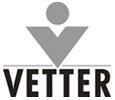On 4 May, Illinois Governor Pat Quinn cut the ribbon at the 2010 BIO International Convention. Vetter, a leading provider of aseptic pre-filled drug-delivery systems, was present as the governor toured the Illinois Pavilion. The company represents the burgeoning of the Midwest as the new hotspot for biotechnology.
This is the second time in four years that the world’s premier biotechnology organisation is holding its annual convention in Chicago, underscoring the region’s rising influence in the biotech industry. Germany-based Vetter chose Chicago when it decided to expand its Vetter Development Service. The company’s state-of-the-art facility, located in Skokie’s Illinois Science and Technology Park, will support preclinical through phase II projects, and will be operational at the beginning of the fourth quarter 2010.
Peter Soelkner, Vetter’s managing director, said: “The decision to base our North American operations in Chicago was a critical element of our strategic growth plan for Vetter. The Midwest location fit like a glove. Centrally located within the United States, it enables us to travel easily to all of our North American customers, and they to us. It is also within a thriving centre of biotechnology industry and top-flight academic institutions. That gives us access to colleagues, cutting-edge science and a highly skilled employee pool.”
“Illinois biotechnology is helping to drive advances in medicine and agriculture,” said Governor Quinn. “We’re not surprised that the rest of the world is discovering what we have to offer.” Biotechnology’s share of total venture investment in Illinois in 2009 reached 21%.
Vetter on the BIO exhibit floor
On 4 May, as part of BIO’s Contract Services Summit, Dr Claudia Roth, site manager of Vetter’s new Chicago facility, presented ‘Design and Implementation of a Fast and Flexible Clinical-Trial-Material Manufacturing Site in the US’. She discussed approaches to clinical manufacturing developed by Vetter, from the focus on disposable technology, to minimising API losses via automated sample filling, to rapid implementation of manufacturing processes.

